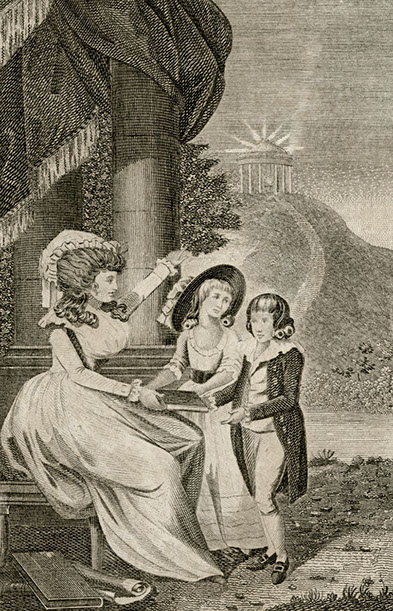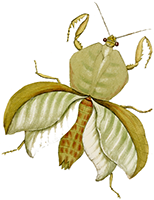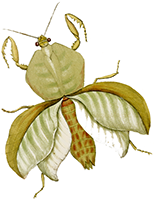roll over image for additional information / click image to view complete book

Lucy Peacock (British, Unknown) Delightful Task! To Rear the Tender Thought, To Teach the Young Idea How to Shoot from Visit for a Week: Or, Hints on the Improvement of Time. 1801. J. Ormrod. 23h52245. Baldwin Library of Historical Children’s Literature, Special & Area Studies Collections, George A. Smathers Libraries, University of Florida.
Lucy Peacock wrote and published in the late 18th century, possibly with another member of her family. This didactic tale was her most popular and went through at least ten editions from 1794-1823. It is emblematic of the idea to instruct and amuse children.






The emergence of science as a popular subject for readers young and old is rarely explored in depth. Modern science and scientific knowledge flourished in the 19th century, but what did people actually know about sciences and how did they know it? The answers to these question are complex, but one thing is certain, the so-called rising generation of the 19th century gleaned most of its knowledge about animals, plants, geology, physics, and natural philosophy from books written by female authors.
Women at the time were excluded from practicing as scientists, and thus from demonstrably adding new knowledge to the world; still, they were deeply invested in making science comprehensible and available to readers. They wrote widely and prolifically, sometimes with an eye to revealing God in the natural world, and other times to highlight critical knowledge for an increasingly scientific and technical age. The object of their efforts was almost always summarized as “mental improvement.” While their readers included well known scientists such as Michael Faraday and Charles Darwin, it is far more compelling to think of the thousands of other readers who helped shape the 19th century, each in their anonymous way.
Many of these writers were themselves anonymous, known to us simply as Anon, A Lady, or by a set of initials accompanied by a gendered pronoun in a preface. Some authors, like Maria Hack, Catherine Louisa Beaufort, Mary Elliott, and Selina Bower, are either poorly known or entirely forgotten despite their impact on young readers. Others, such as Maria Edgeworth, Sarah Trimmer, Jane Marcet, and Priscilla Wakefield, while recognized as important literary figures, rarely receive credit for making science available and fascinating to everyone.
All of this simply underscores how overdue acknowledgment for the importance of women in the modern sciences still is, and how behind we still are in understanding science networks among women in the 19th century. There was a vast matrix of scientific writing for children, richly represented in the Baldwin Library, which we are only beginning to value as foundational. The purpose of this exhibit is not only to help unearth these remarkable works, but to assemble them in a way that celebrates their significance - the readers of these books were being schooled for England’s scientific and industrial revolution. We can, perhaps, be forgiven for thinking that male educators were responsible for this transformation, but that was simply not the case. It was women who transformed the natural order.
Dr. Alan Rauch, University of North Carolina-Charlotte
Co-curator
This online exhibition is based on the exhibition of the same name that was presented at the University of Florida George A. Smathers Libraries, November 2 – December 18, 2015.
Curated by Suzan A. Alteri and Dr. Alan Rauch
Designed by Lauren O'Neill and Lourdes Santamaría-Wheeler